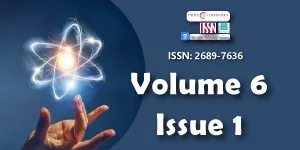About the connection of the electron binding energy of a single carbon anion with binding energies of an electron attached to carbon molecules
Main Article Content
Abstract
We demonstrate that the model of zero-range potentials can be successfully employed for the description of attached electrons in atomic and molecular anions, for example, negatively charged carbon clusters. To illustrate the capability of the model we calculate the energies of the attached electron for the family of carbon cluster anions consisting of two-, three- (equilateral triangle) and four (tetrahedron) carbon atoms equidistant from each other as well as for a C3 molecule having a chain structure. The considered approach can be easily extended to carbon clusters containing an arbitrary number of atoms arranged in an arbitrary configuration.
Downloads
Article Details
Copyright (c) 2023 Baltenkov AS, et al.

This work is licensed under a Creative Commons Attribution 4.0 International License.
Licensing and protecting the author rights is the central aim and core of the publishing business. Peertechz dedicates itself in making it easier for people to share and build upon the work of others while maintaining consistency with the rules of copyright. Peertechz licensing terms are formulated to facilitate reuse of the manuscripts published in journals to take maximum advantage of Open Access publication and for the purpose of disseminating knowledge.
We support 'libre' open access, which defines Open Access in true terms as free of charge online access along with usage rights. The usage rights are granted through the use of specific Creative Commons license.
Peertechz accomplice with- [CC BY 4.0]
Explanation
'CC' stands for Creative Commons license. 'BY' symbolizes that users have provided attribution to the creator that the published manuscripts can be used or shared. This license allows for redistribution, commercial and non-commercial, as long as it is passed along unchanged and in whole, with credit to the author.
Please take in notification that Creative Commons user licenses are non-revocable. We recommend authors to check if their funding body requires a specific license.
With this license, the authors are allowed that after publishing with Peertechz, they can share their research by posting a free draft copy of their article to any repository or website.
'CC BY' license observance:
|
License Name |
Permission to read and download |
Permission to display in a repository |
Permission to translate |
Commercial uses of manuscript |
|
CC BY 4.0 |
Yes |
Yes |
Yes |
Yes |
The authors please note that Creative Commons license is focused on making creative works available for discovery and reuse. Creative Commons licenses provide an alternative to standard copyrights, allowing authors to specify ways that their works can be used without having to grant permission for each individual request. Others who want to reserve all of their rights under copyright law should not use CC licenses.
Van Orden A, Saykally RJ. Small carbon clusters: spectroscopy, structure, and energetics. Chem Rev. 1998 Sep-Oct;98(6):2313-57. doi: 10.1021/cr970086n. PMID: 11543299.
Stasyuk AJ, Stasyuk OA, Solà M, Voityuk AA. Cyclo[18]carbon: the smallest all-carbon electron acceptor. Chem Commun (Camb). 2020 Jan 2;56(3):352-355. doi: 10.1039/c9cc08399e. Erratum in: Chem Commun (Camb). 2020 Jan 25;56(8):1302. PMID: 31825030.
Drukarev GF. The zero-range potential model and its application in atomic and molecular physics, Adv. Quantum Chem. 1978; 11: 251-274.
Demkov YuN, Ostrovskii VN. Zero-Range Potentials and Their Applications in Atomic Physics. 1st ed.; Plenum Press: New York, NY, USA. 1988.
Amusia M Ya, Baltenkov AS, Woiciechowski I. Wigner time delay of particles elastically scattered by a cluster of zero-range potentials. Phys. Rev. A. 2022; 105: 012807-18.
Dolmatov VK, Manson ST. A glimpse into photodetachment spectra of giant and nested fullerene anions. Atoms. 2022; 10:99-110.
Baltenkov AS. Spherical coordinates of carbon atoms in C20 fullerene cage. arXiv: 2018; 1812.07878v1.
MATLAB. The MathWorks, Inc., Natick, Massachusetts, United States. 2022a.

